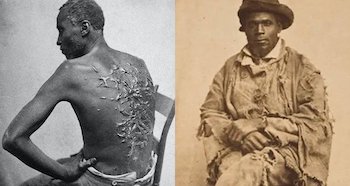Peter’s Scars and the Spirit of the Banyamulenge: A Story of Resistance, Pain, and Enduring Strength.
June 11, 2025international#analysis

In 1863, the world was shocked by a powerful photograph of a Black slave named Peter. Known as “Whipped Peter” or “The Scourged Back,” his bare back was covered with deep, raw scars from relentless whipping on a Mississippi plantation. This haunting image became one of the most vivid symbols of the cruelty of American slavery. Yet, Peter’s story is not only about the horrors of slavery in the United States. His struggle for freedom and dignity echoes far beyond, connecting to the experiences of the Banyamulenge people in Central Africa. Like Peter, the Banyamulenge have endured brutal oppression because they refused to bow down to colonial powers or neighboring tribes. Their story is one of resilience and suffering that continues to this day.
Peter was a slave forced to work under the harshest conditions on a sugar plantation. Every day brought new threats of violence. His overseers showed no mercy. When he fell behind in his work or showed even a hint of resistance, Peter was whipped brutally. After each whipping, salt water was poured onto his fresh wounds. This was not only to punish but also to cause unbearable pain and slow the healing. His back was covered in scars so deep that they revealed the cruelty of slavery in a way words could not.
Despite the horror, Peter’s spirit did not break. He made a courageous escape into the wild, surviving for more than ten days without food or shelter. To stop hunting dogs from following his trail, Peter smeared onions on his wounds to mask the scent of his blood. His goal was to reach the Union Army, which had taken control of part of Baton Rouge, Louisiana. When he finally arrived, the soldiers were horrified by the state of his body. His scarred back told a story that the nation could no longer ignore. The photograph taken of Peter sitting with his back to the camera was published in Harper’s Weekly magazine on July 4, 1863. It was a stark reminder on Independence Day that freedom was still out of reach for millions.
Halfway across the world, in the hills of eastern Democratic Republic of the Congo, the Banyamulenge community has faced a parallel story of pain and resistance. For generations, they have refused to submit to colonial rulers, exploitative governments, or hostile neighboring tribes. This refusal to bow down has come at a terrible cost. The Banyamulenge have been subjected to violent attacks, their homes burned openly in daylight, families torn apart, and communities displaced. Their people have been tortured and assaulted simply for standing firm in their identity and rights.
The hatred against the Banyamulenge has been fueled by jealousy, fear, and political manipulation. This long-standing hostility is not only physical but also social and political. The scars they carry are as deep as those on Peter’s back. However, unlike Peter’s story which gained international attention, the suffering of the Banyamulenge has often been ignored or silenced on the world stage.
Peter’s scars reveal the physical violence used to enforce slavery in America. The scars of the Banyamulenge reveal the ethnic hatred and political violence used to suppress a proud community that refused to be controlled or erased. Both stories expose how cruelty is used as a tool by those in power to maintain control through fear. Yet, both Peter and the Banyamulenge embody strength and resilience in the face of this cruelty. Peter’s daring escape and eventual enlistment in the Union Army symbolize a powerful fight for freedom and justice. Likewise, the Banyamulenge continue to protect their dignity and identity despite ongoing persecution and displacement.
Peter’s story was a powerful call to the world to confront the brutal truth of slavery and the inhumanity it inflicted. It forced many to see what had been hidden in plain sight and helped drive the movement toward freedom and justice. Today, the ongoing persecution of the Banyamulenge demands the same urgent attention and compassion. Their stories, marked by deep pain and loss but also by incredible courage and resilience, remind us that the struggle against oppression is not over.
The scars they carry both visible and invisible are a lasting testament to the cost of resistance and the refusal to surrender their identity. These wounds speak volumes about human dignity and the strength it takes to stand up when faced with violence and hatred. Their experience challenges us all to not only remember their suffering but to actively fight against the forces of hatred, discrimination, and injustice wherever they exist in the world.
Honoring the courage of Peter and the Banyamulenge means more than just telling their stories. It means committing to a future where no one is forced to endure cruelty because they refused to bow down. It means creating communities grounded in respect, understanding, and equality. By learning from their strength and sacrifice, we can inspire new generations to stand firm, speak out, and work tirelessly toward a world where freedom and dignity are guaranteed for every person.


